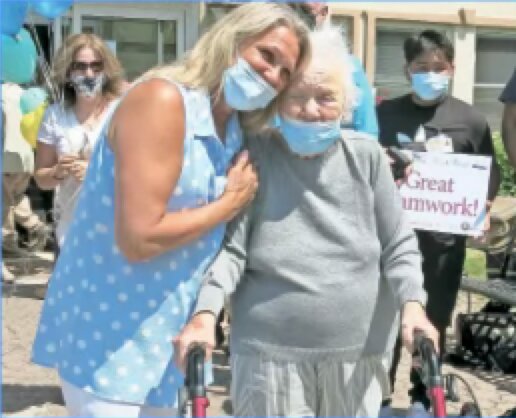Living in a world after the Covid-19 pandemic
The country officially returned to normal on May 11 with the end of the federal public health emergency surrounding Covid-19 — but for many, it’s been pretty close to normalcy for months.
Virtually no one asks for proof of vaccination. Masks, while occasionally seen, have found themselves primarily back on the faces of medical professionals. And the floor markings intended to help people put six feet of distance from their neighbors have almost faded into time.
Yet, the federal end to the emergency is far from ceremonial. Washington has stopped buying vaccines and treatment, although plenty of supplies already purchased remain on-hand. It once again became more difficult to qualify for Medicaid — something that has loosened significantly at the height of the pandemic. However, states like New York isn’t expected to address eligibility at the more local level until later this summer.
And, of course, many of the financial assistance programs that had almost become commonplace are long gone, but free vaccines for children remain thanks to efforts by the Centers for Disease Control and Prevention. Pfizer and Moderna — the two major pharmaceutical companies that supplied most of the country’s vaccine doses — vow they’ll continue providing free vaccines to those who can’t afford it, or don’t have the insurance to cover it.
Much closer to home, government officials with Nassau County as well as the towns of Hempstead and Oyster Bay, had nothing to say about the pandemic. County Executive Bruce Blakeman went after mask mandates — especially in schools — within minutes of being sworn in more than a year ago.
“The governor should adhere to the law, follow the science, and allow local officials to decide what is best for their hometown communities,” Blakeman said at the time. “Nassau is not in crisis, and shouldn’t be painted with the same broad brush as the rest of New York state.”
And more local programs, like the Household Assistance Program that offered a $375 per household grant from federal funds, as well as the Emergency Rental Assistance Program — ended last fall, with a lot of the money unclaimed.
In the end, nearly 6.7 million positive cases were reported statewide, with New York City accounting for nearly half of that with 3.1 million cases. Long Island reported 1.1 million cases, while 5,346 people in Nassau County died.
Nearly 85 percent of people in Nassau received at least one vaccine shot, representing more than 1.1 million people — the best overall percentage in the state, behind the 88 percent from Queens and Manhattan.
One woman the coronavirus would not defeat was Nancy Casale of Wantagh. Last year, the then-95-year-old walked out of the Glen Cove Center for Nursing and Rehabilitation on her own power, after months of fighting Covid-19 and its aftermath.
“Nancy is a wonderful soul, said Lynda Torel from the Glen Cove center. “At 95, she’s energetic, eager and willing — all the qualities that make her a fighter. She’s been on a fantastic journey. She never said ‘no.’”

 47.0°,
Fair
47.0°,
Fair 




